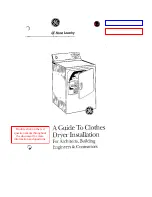
SERVICE PROCEDURES AND ADJUSTMENTS
TEMPERATURE PROBE TEST
Temperature probe is a thermistor type RTD
(resistance temperature device). As temperature
increases, resistance value decreases.
Probe Fault
If a temperature probe fault occurs, a red diagnostic
LED on control PCB (inside control box assembly) will
flash. In addition, contactors used to power heating
elements will open. A temperature probe fault can be
caused by a lead wire break or a lead short.
To reset control circuit, cycle power. If problem still
exists, refer to TROUBLESHOOTING
Check probe as follows:
1.
Turn power switch off.
2.
Access CONTROL BOX ASSEMBLY.
3.
Disconnect proble leads from controller board T6
and T7.
4.
Measure shortening temperature.
5.
Use a VOM to measure probe resistance.
A.
Connect meter leads to probe leads. If
measured resistance value is within range,
probe is functioning properly.
B.
If measured resistance value is outside of
range, perform following:
1)
2)
Remove wire nuts and measure probe
resistance.
•
If measured resistance value is
within range, check wire
connections between probe and
control board.
•
If measured resistance value is
outside of range, replace
TEMPERATURE PROBE
Temperature °F
Resistance Ω
77
90 - 110K
212
5,016 - 6,130
275
1,804 - 2,204
300
1,254 - 1,534
350
646 - 790
392
391 - 478
TEMPERATURE CONTROL
CALIBRATION
1.
Verify condition of temperature probe as outlined
under TEMPERATURE PROBE TEST.
NOTE:
The level must be between MIN & MAX fill
lines before proceeding.
2.
Check shortening level in fry tank.
3.
Allow shortening to cool below 300°F.
4.
Place a thermocouple in fry tank geometric
center, one inch below shortening surface.
5.
Set the cooking control to 350°F.
6.
Turn fryer on.
7.
Monitor HEATING light as fryer cycles on and off.
NOTE:
Stir shortening to eliminate any cold zones.
A.
Allow heat to cycle three times to stabilize
shortening temperature.
B.
Record meter reading from thermocouple
when current cycles off and on for at least
two complete heating cycles.
8.
Calculate average temperature by adding
temperature reading when heat goes off to
temperature reading when the heat comes on
and divide by 2.
[ Temp. (Heat off) + Temp. (Heat on) ] ÷ 2 =
Average Temp.
Example:
360° + 340° ÷ 2 = 350°F. The average
temperature should be 350°F (± 5°F).
A.
If the average temperature reading is within
tolerance, cooking control is properly
calibrated.
NOTE:
Ensure that the shaft and knob position does
not change when loosening set screw and removing
temperature knob, as this could affect calibration.
B.
If the average temperature reading is out of
tolerance, loosen set screw to remove
temperature knob and adjust calibration
potentiometer.
C.
Adjust calibration potentiometer clockwise
to increase temperature / counterclockwise
to decrease temperature.
D.
If over 25° of adjustment is necessary,
replace cooking control.
CEF40/75 FRYER - SERVICE PROCEDURES AND ADJUSTMENTS
F45657 (0517)
Page 14 of 25











































